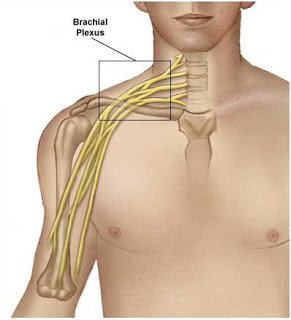
Brachial plexus injuries, which is a very common injury in military medicine, is the most severe form of nerve injuries according to my professional experience, but it is not impossible to treat. The healing process is a bit long and requires patience, but with appropriate surgical approaches and timing, satisfactory results can be obtained.
Traumatic Brachial Plexus injuries occur in 3 ways. As a result of these injuries, nerve injury may occur in the lower, middle and upper nerve roots or in all of them. Concomitant vascular injuries and bone fractures should be considered in these patients and necessary investigations should be performed. Since there may be severe and permanent loss of function, surgical intervention should be performed at the appropriate time. In the majority of patients, significant improvement is achieved in the neurological functions of the arm.
Brachial Plexus nerve injuries may develop in the following ways;
Injury by cutting, piercing and firearms; It may be the result of cutting the brachial plexus nerves with sharp instruments such as a knife or glass. In addition, plexus nerves may be damaged as a result of injury with gun, rifle bullets or shrapnel.
Surgical treatment for nerve repair should be performed without wasting time in injuries with sharp instruments. Early surgical results are always better. In injuries with firearms or shrapnel, a period of about 3 weeks should be waited for wound healing and antibiotic treatment.
Injury by blunt trauma; Excessive pressing of the shoulder downwards and exposure of the head to force to separate it from the shoulder, which occur as a result of traffic accidents, especially motorcycle accidents, are the result of nerve damage.
In this type of injury, MRI should be performed to see if there is a rupture in the nerve roots from the spinal cord exit site. These are the most severe patients. In such patients, nerve transfer can be performed within 3 months at the latest.
Breast and lung cancer patients develop brachial plexus damage due to radiation following radiotherapy treatment. Surgical treatment should be applied in patients with severe loss of function and severe pain following nerve conduction tests (EMG) and MR Neurography examinations.
Significant neurologic recovery and pain control can be achieved after surgical treatment. Physical therapy before and after surgery is an indispensable part of the recovery process.

